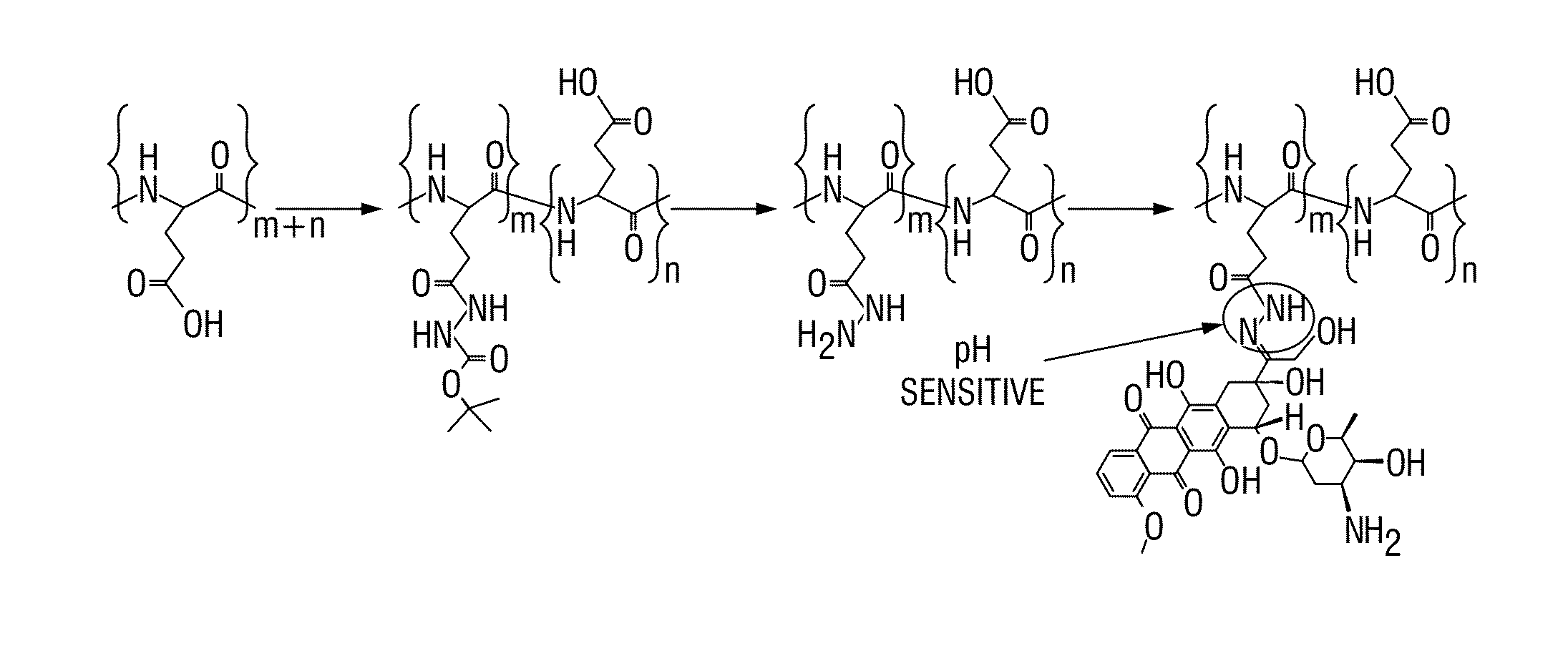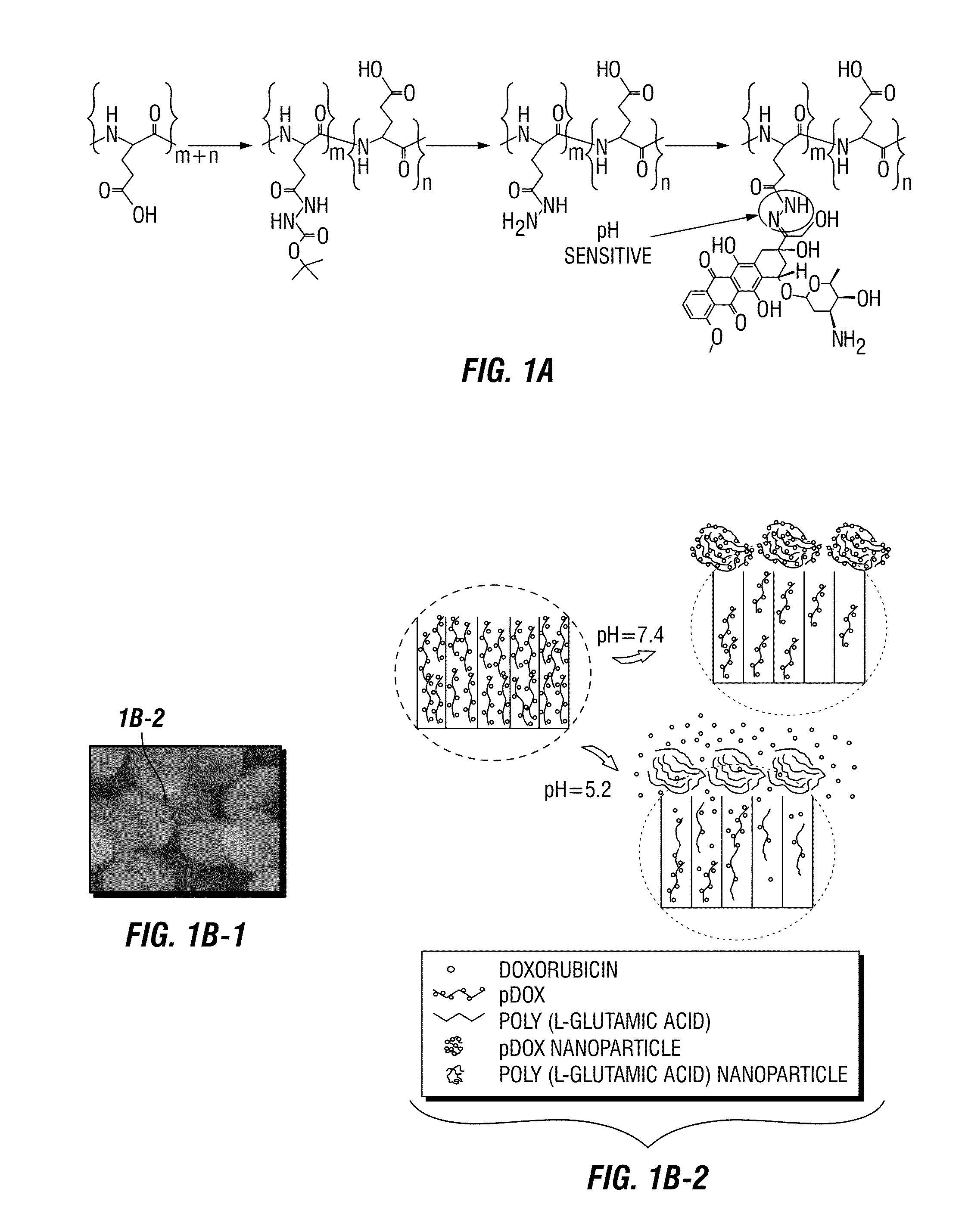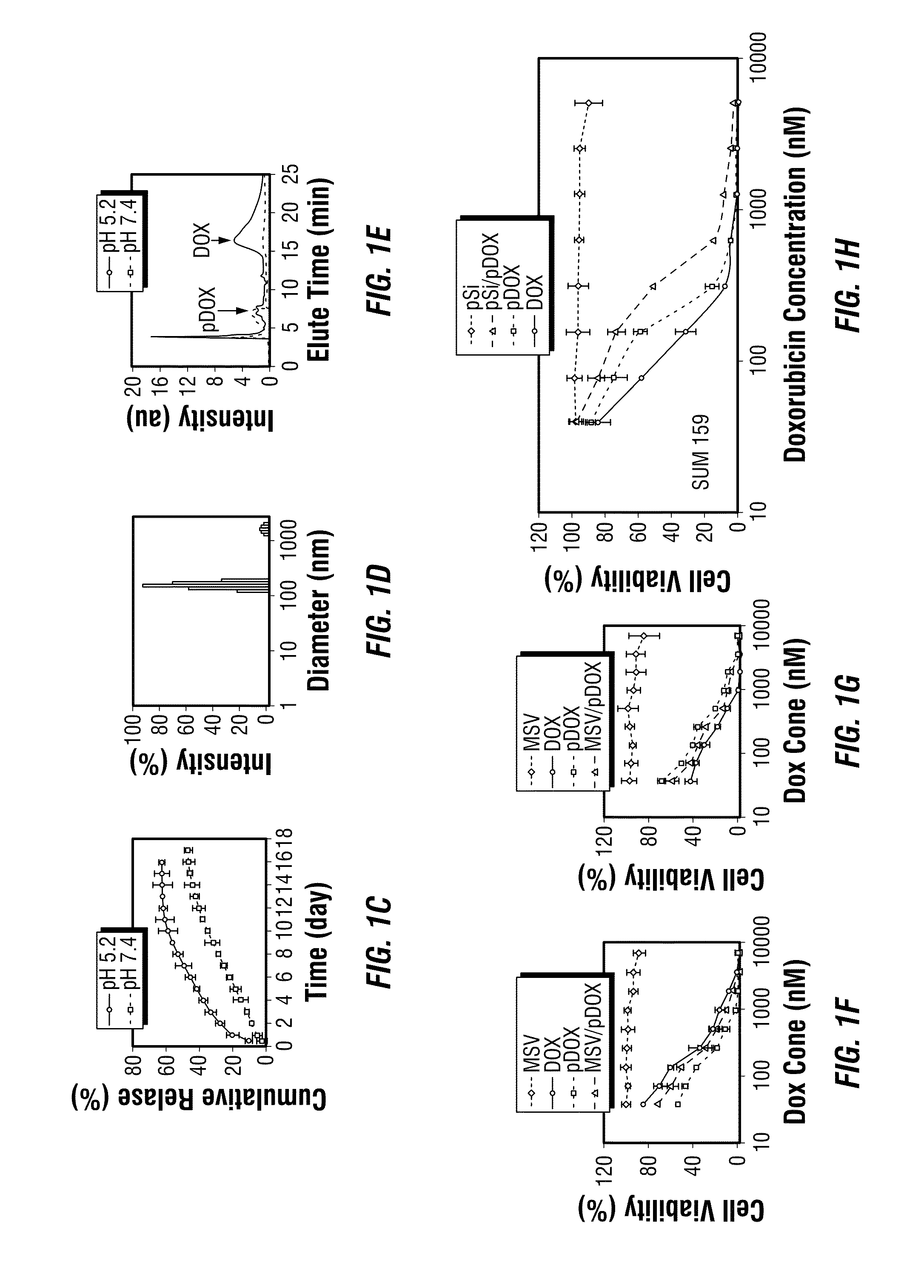Compositions and methods of treating therapy resistant cancer and uses thereof
a cancer and chemotherapy technology, applied in the field of nanotechnology, can solve the problems of numerous biological barriers within the body, toxicity of therapy-related drugs, and the delivery of active agents continues to pose a significant challenge,
- Summary
- Abstract
- Description
- Claims
- Application Information
AI Technical Summary
Benefits of technology
Problems solved by technology
Method used
Image
Examples
example 1
Synthesis of Polymeric Doxorubicin
[0072]Hydrazide groups were conjugated to the glutamic acid side chains of poly (L-glutamic acid) via mixing acid anhydride reaction. Briefly, N-morphylmorline (Sigma-aldrich) was added to poly (L-glutamic acid) (Sigma-aldrich) in anhydrous dimethylformamide (DMF), followed by dropwise addition of isobutyl chloroformate at 4° C. under Argon gas. After stirring for 15 min, carbazic acid tert-butyl ester (Sigma-aldrich) in DMF was added. The resulting solution was allowed to react for 30 min at 4° C. and 2 h at room temperature. To synthesize the final product, 100 mg poly (L-glutamic acid hydrizide)-co-poly (L-glutamic acid) was dissolved in 200 mL anhydrous methanol, and 100 μL of trifluoro acetic acid was added. Dox hydrochloride was then added, and the mixture was stirred at room temperature for 48 hours under Argon gas. The polymer Dox was concentrated, dialyzed in methanol, and purified with Sephadex-LH20 (Amersham Pharmacia Biotech Co.). Absenc...
example 2
Fabrication of Porous Silicon / pDox
[0073]Discoidal porous silicon particles were fabricated as described previously (Shen, H. et al. 2012 and in FIGS. 11A-11D). The particles were then modified with 2% (v / v) 3-aminopropyltriethoxysilane (APTES) in isopropanol for 48 hours at 55° C. to conjugate primary amine on surface. The APTES-modified 2.6 μm×700 nm porous silicon particles were loaded with concentrated pDox in methanol and dried in vacuum. This loading procedure was repeated twice to achieve maximum loading.
example 3
Intra-Cellular Trafficking of pDox
[0074]MDA-MB-231 cells were seeded at 1000 cells / chamber on culture slides (BD Falcon) in DMEM containing 10% FBS. Dox or pDox was added 24 hours later. Cells were harvested at different time points. To stain late endosome / lysosomes, cells were incubated with 75 nM lysotracker Green (Invitrogen) in DMEM for 45 min, rinsed with PBS, and fixed with 2.5% formaldehyde for 10 min at room temperature. The slides were mounted by using with ProLong® Gold antifade reagent with DAPI (Invitrogen). Fluorescent images were captured using a confocal microscope (Nikon A1 Confocal Imaging system)
PUM
 Login to View More
Login to View More Abstract
Description
Claims
Application Information
 Login to View More
Login to View More - R&D
- Intellectual Property
- Life Sciences
- Materials
- Tech Scout
- Unparalleled Data Quality
- Higher Quality Content
- 60% Fewer Hallucinations
Browse by: Latest US Patents, China's latest patents, Technical Efficacy Thesaurus, Application Domain, Technology Topic, Popular Technical Reports.
© 2025 PatSnap. All rights reserved.Legal|Privacy policy|Modern Slavery Act Transparency Statement|Sitemap|About US| Contact US: help@patsnap.com



